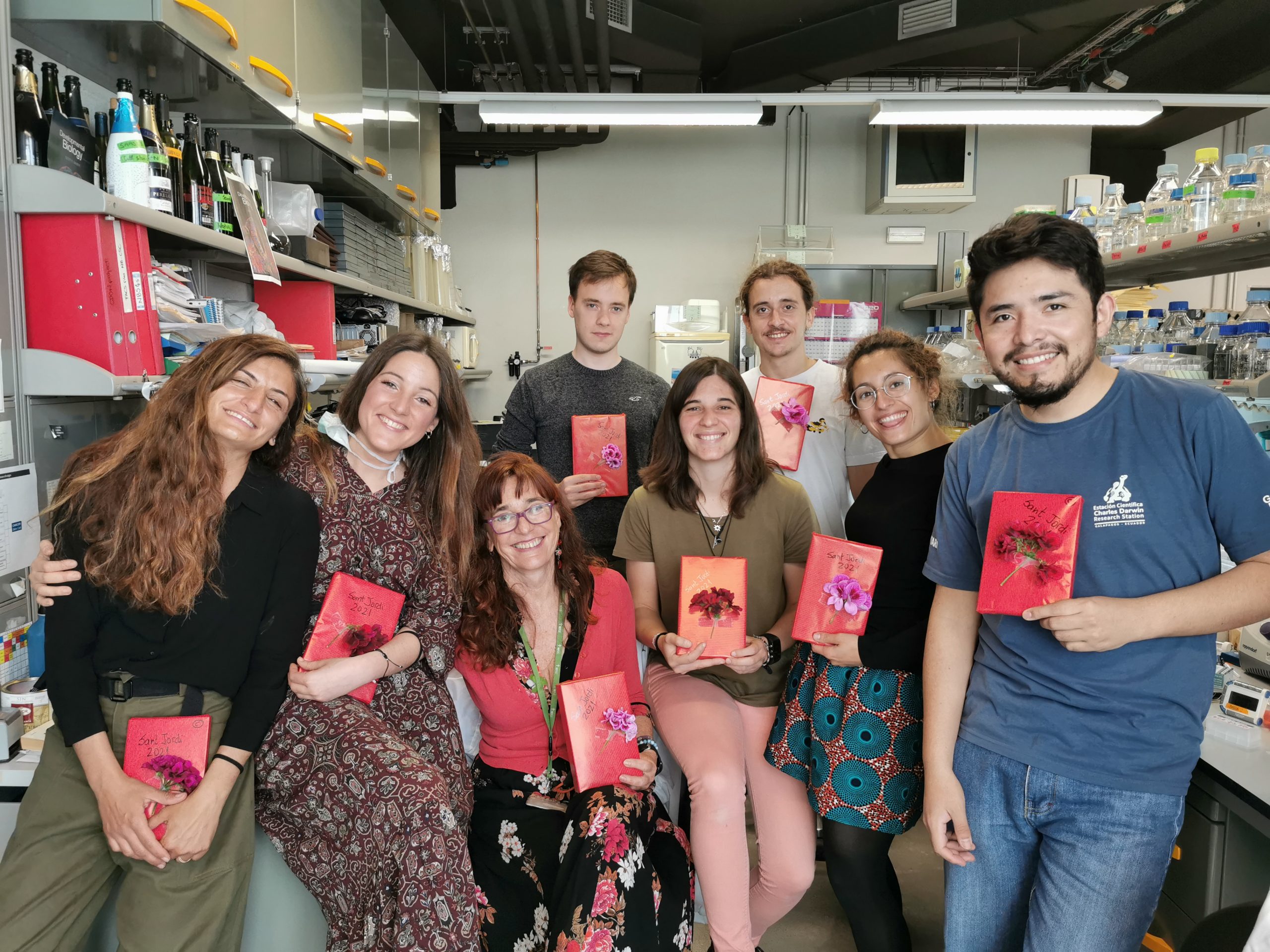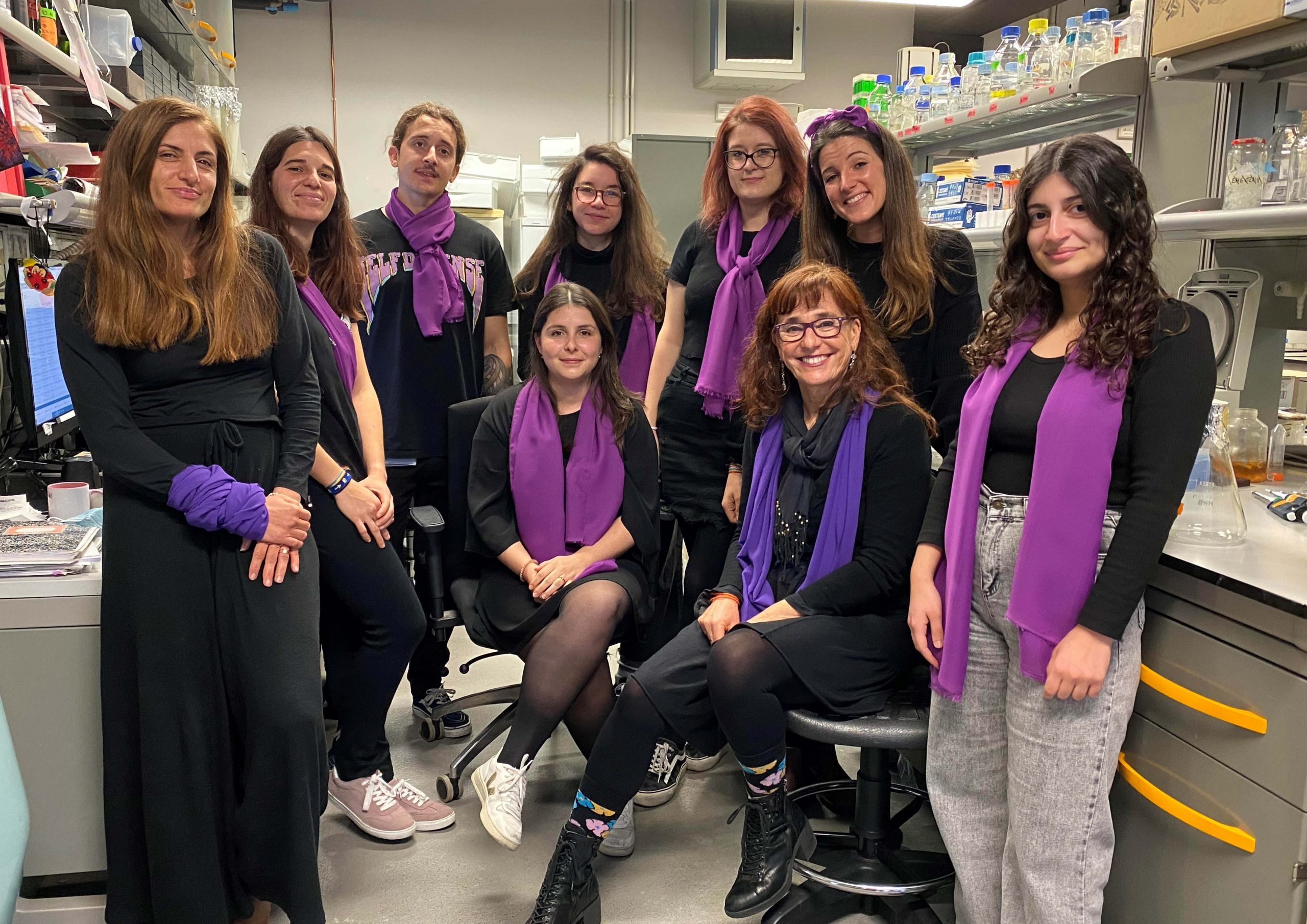Lab presentation
A new 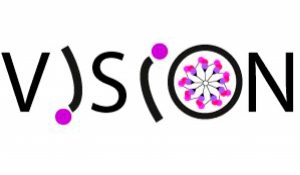 of centrosome-cilia in normal and pathological neural development
of centrosome-cilia in normal and pathological neural development
The centrosome is a membrane less organelle that gears fundamental roles in ensuring correct cell division, efficient primary cilia formation and normal neural tissue development. Defects in centrosome/cilia genes are directly linked to Neurodevelopment Disorders (NDDs) such as microcephaly, a rare, yet devastating condition caused by environmental insults or by genetic lesions.
The major research goal in our laboratory is to unravel some of the key mechanisms controlling proper neural development, from the centrosome/cilia axis to neurogenesis, in link with human brain evolution and disease. Our primary tools include the most in vivo dynamic system we can get our hands on; the embryonic chick neural tube as well as innovative models of organoids from human induced pluripotent stem cells, that recapitulate species-specific features of the central nervous system.
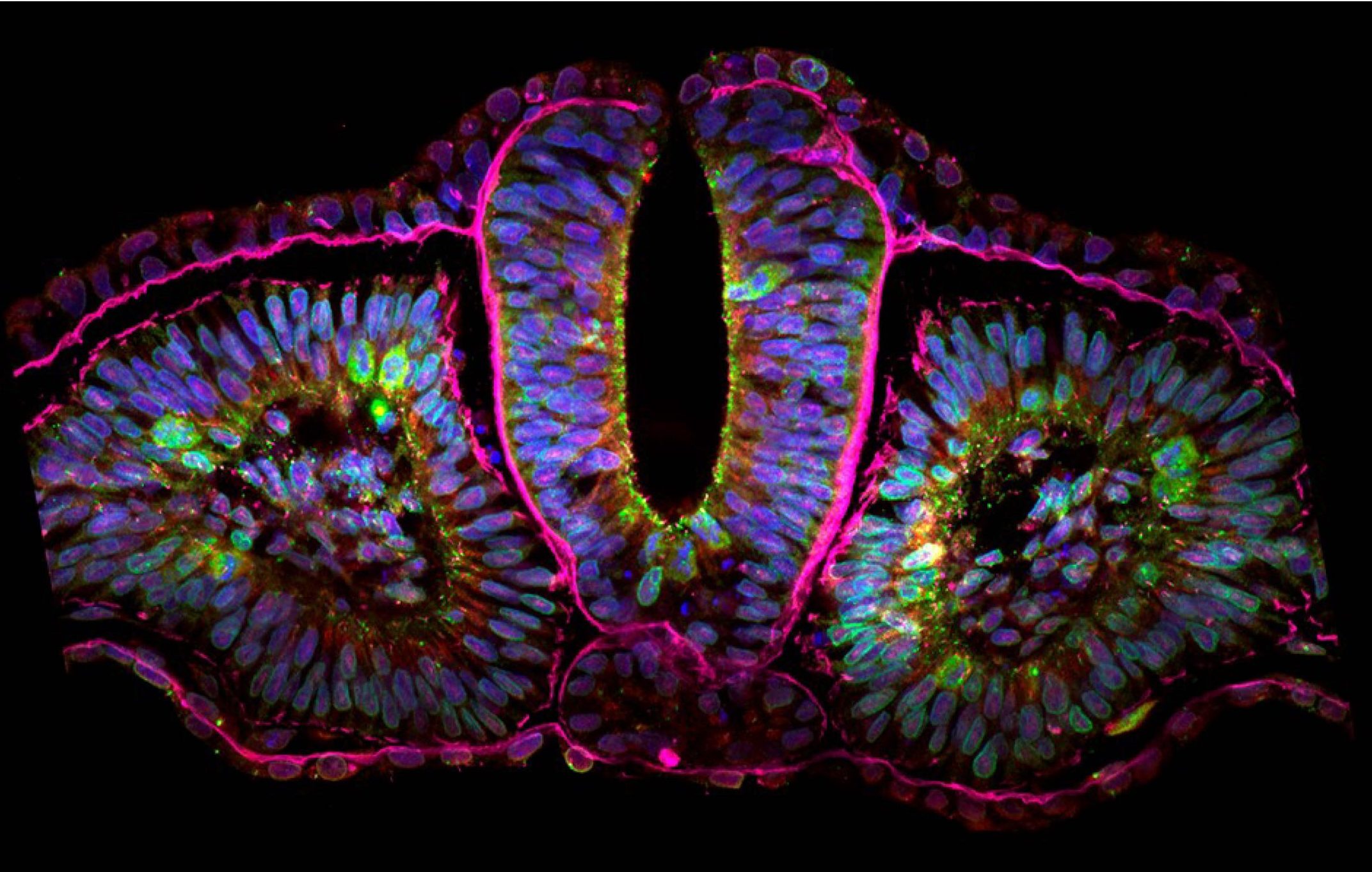
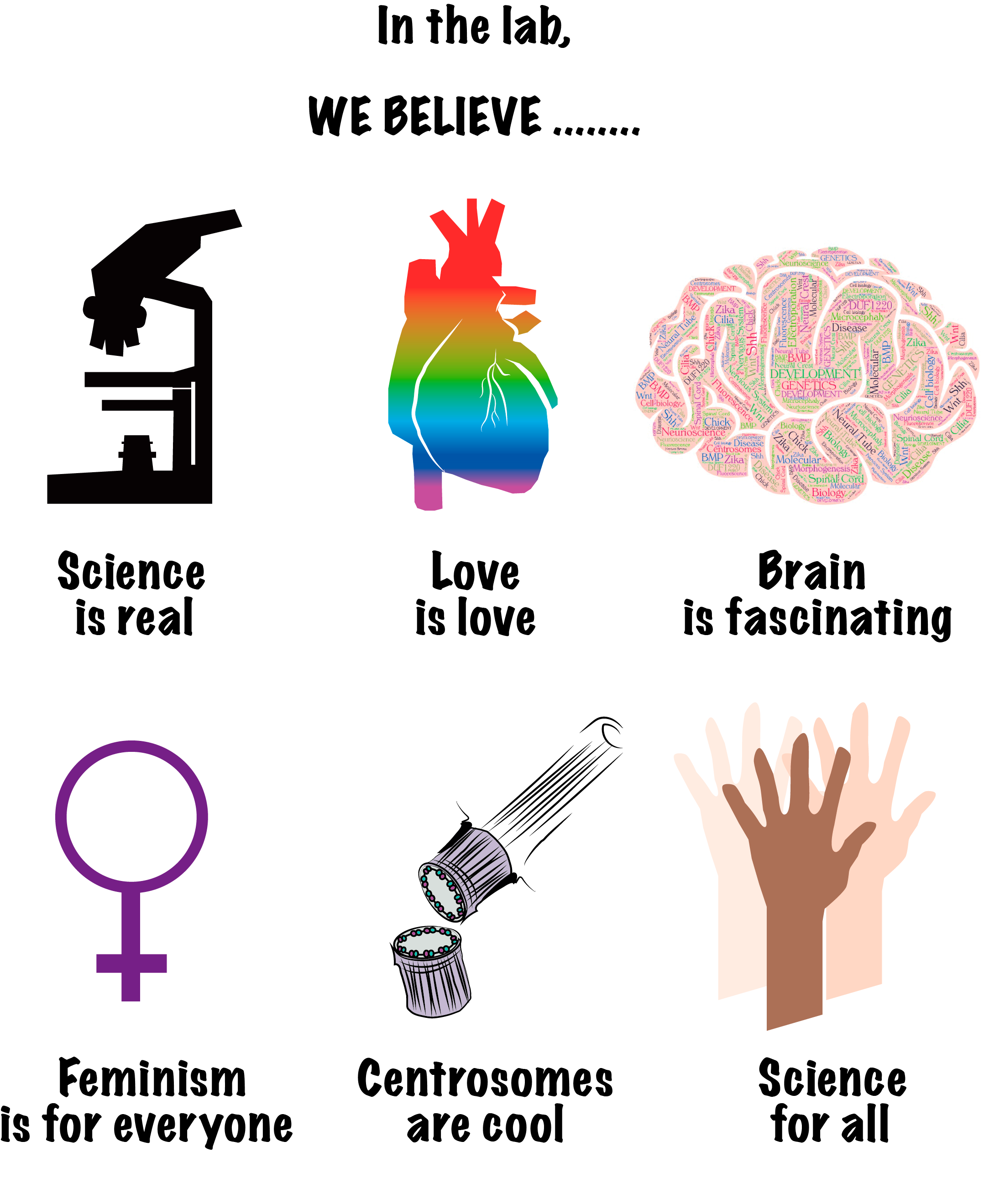
Projects
Centrosome/cilia axis as a central hub in Zika syndrome
Zika virus (ZIKV) infection, an Aedes mosquito-borne flavivirus, is declared a global threat for public health due to its association with congenital neurodevelopmental birth defects. Despite the enormous basic and clinical research efforts, no specific therapy has yet been approved for the treatment or prevention of ZIKV infection, thus a better understanding of the pathophysiology mechanisms is an urgent need. Our recent studies of the effect of ZIKV non-structural (NS) -proteins on neural precursor cells (NPCs) proliferation, show that the ZIKV-NS5 protein interacts with host proteins at the base of the primary cilia, causing an atypical non-genetic ciliopathy and premature neuron delamination. One of our major aims is to provide high resolution vision of the ZIKV-NS5-cilia base proteins interactions, shedding new light into the mechanisms by which ZIKV-NS5 interferes with the molecular machinery of primary cilia formation and highlighting new potential targets for therapeutic intervention.
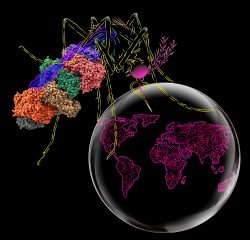
Human-acquired centrosome-cilia genes, linking neurogenesis and evolution of central nervous system growth
Our aim is to elucidate the molecular and cellular mechanisms underlying the evolutionary expansion of the developing CNS and more precisely the increase in the number of NPCs generated during human embryonic CNS development. Novel insights on human CNS development and evolution may come from NDDs where species-specific developmental mechanisms have been affected. Recent discoveries have revealed a potential link of human-specific genes enriched in NPCs and the 1q21.1 syndrome, an NDD associated to abnormalities in head size and mental pathologies. This provides a unique opportunity to Interrogate the contribution of 1q21 human-specific genes in the evolutionary expansion of the human embryonic CNS, dissect the cellular mechanisms associated with the 1q21 human-specific genes and understand how de novo mutations or deletions of these genes impact neural development.
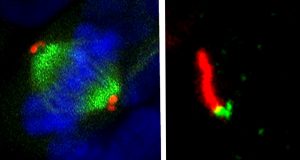
Modelling neurodevelopmental disorders in human neural organoids
We study centrosome and cilia genes impact on human NPCs behavior displaying specific mutations causing NDDs. We combine technologies of induced pluripotent stem cells (iPSC), together with genomic editing or electroporation, in in vitro 3D organoid model of neurogenesis. We aim to determine what are the cellular and molecular consequences of centrosome/cilia genes mutations in human neurogenesis, in order to define the pathophysiology mechanisms of NDDs, and how they may relate with species-specific mechanisms of human embryonic CNS development.
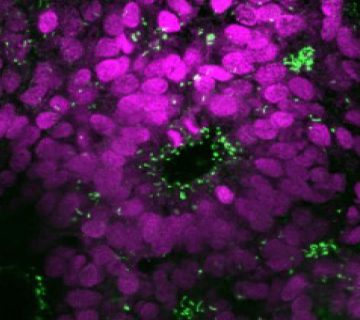
Lab people
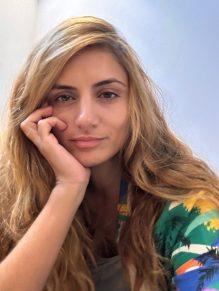
Murielle Saade
Principal Investigator
Murielle Saade is a Ramon y Cajal Research Investigator at IBMB. Her fascination to understand embryonic development started early in her scientific career and exponentially grow during her training in 4 different internationally recognized institutions from 4 different countries. After a BSc training at the University of Saint-Joseph-USJ (Lebanon), she moved to University of Aix-Marseille II (France), to carry out her Master and PhD studies under the supervision of Dr. Catherine Nguyen, to study embryonic thymus development and the generation of a correct and functional immune system. After her PhD, she joined the IBMB as a postdoctoral scientist, where she made seminal discoveries in elucidating the roles of the centrosome/ciliary axis in neurogenesis in health and disease.
In 2020, she started her career as a young PI, with the goal to elucidate the molecular and cellular mechanisms underlying the evolutionary human brain expansion. She seeks to understand human neurodevelopmental disorders such as microcephaly by studying the roles of centrosomes and primary cilia in cell division and tissue growth.
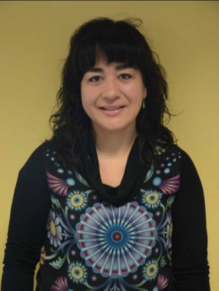
Susana Usieto
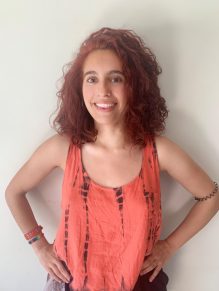
Paula España
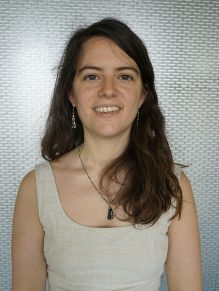
Glòria Casas
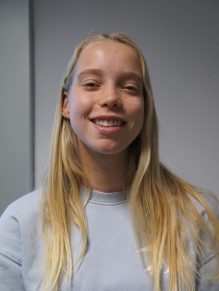
Annemiek Van Vliet

Marianna Paladini

Elizabeth Iotzov
Past students
Selected publications
Axelle Wilmerding, A., Paula Espana-Bonilla, P., Nikolaos-Nikiforos Giakoumakis, N. N., & Murielle Saade. (2023). Expansion microscopy of the chick embryo neural tube to overcome molecular crowding at the centrosomes-cilia. STAR Protocols, 4(1), 101997. doi: 10.1016/j.xpro.2022.101997
Murielle Saade, Diego S Ferrero, José Blanco-Ameijeiras, Elena Gonzalez-Gobartt, Victor M Ruiz-Arroyo, Elena Martínez-Sáez, Santiago Ramón y Cajal, Nuria Verdaguer and Elisa Martí (2020) Multimerization of Zika Virus-NS5 causes a ciliopathy and forces premature neurogenesis. Cell Stem Cell 27(6):920-936.e8. doi: 10.1016/j.stem.2020.10.002. https://pubmed.ncbi.nlm.nih.gov/33147489/
Highlighted in Nature Review Microbiol https://www.nature.com/articles/s41579-020-00481-9
Murielle Saade, Jose Blanco-Ameijeiras, Elena Gonzalez-Gobartt, and Elisa Martí (2018) A centrosomal view of CNS growth Development 45(21):dev170613. doi: 10.1242/dev.170613 http://dev.biologists.org/content/145/21/dev170613
Murielle Saade, Elena Gonzalez-Gobartt, Rene Escalona, Susana Usieto and Elisa Martí (2017) Shh-mediated centrosomal recruitment of PKA promotes symmetric proliferative neuroepithelial cell division. Nature Cell Biology 19(5):493-503. doi:10.1038/ncb3512 http://www.nature.com/ncb/journal/v19/n5/abs/ncb3512.html
Murielle Saade, Irene Gutierrez, Gwenvael Le Dreau, M Angeles Rabadán, David G. Miguez, Javier Buceta and Elisa Martí (2013) Sonic hedgehog signaling switches the mode of division in the developing nervous system. Cell Reports 4(3):492-503. doi: 10.1016/j.celrep.2013.06.038.https://www.sciencedirect.com/science/article/pii/S2211124713003306?via%3Dihub
Highlighted in F1000 http://f1000.com/prime/718050366#recommendations-content
All publications
Carolina Gracia-Diaz, Yijing Zhou, Qian Yang, Chul-Hwan Lee, Paula Espana-Bonilla, //, Murielle Saade, Hongjun Song, Guo-Li Ming, Fowzan S. Alkuraya, Reza Maroofian, Pankaj B. Agrawal, Danny Reinberg, Elizabeth J. Bhoj, Marian Martinez-Balbas, Naiara Akizu (2023) Gain and loss of function variants in EZH1 disrupt neurogenesis and cause dominant and recessive neurodevelopmental disorders. Nat Commun, 2023 Jul 11;14(1):4109. doi: 10.1038/s41467-023-39645-5.
Axelle Wilmerding, A., Paula Espana-Bonilla, P., Nikolaos-Nikiforos Giakoumakis, N. N., & Murielle Saade. (2023). Expansion microscopy of the chick embryo neural tube to overcome molecular crowding at the centrosomes-cilia. STAR Protocols, 4(1), 101997. doi: 10.1016/j.xpro.2022.101997
Murielle Saade, Diego S Ferrero, José Blanco-Ameijeiras, Elena Gonzalez-Gobartt, Victor M Ruiz-Arroyo, Elena Martínez-Sáez, Santiago Ramón y Cajal, Nuria Verdaguer and Elisa Martí (2020) Multimerization of Zika Virus-NS5 causes a ciliopathy and forces premature neurogenesis. Cell Stem Cell 27(6):920-936.e8. doi: 10.1016/j.stem.2020.10.002. https://pubmed.ncbi.nlm.nih.gov/33147489/
Highlighted in Nature Review Microbiol https://www.nature.com/articles/s41579-020-00481-9
Murielle Saade, Jose Blanco-Ameijeiras, Elena Gonzalez-Gobartt, and Elisa Martí (2018) A centrosomal view of CNS growth Development 45(21):dev170613. doi: 10.1242/dev.170613 http://dev.biologists.org/content/145/21/dev170613
Murielle Saade, Elena Gonzalez-Gobartt, Rene Escalona, Susana Usieto and Elisa Martí (2017) Shh-mediated centrosomal recruitment of PKA promotes symmetric proliferative neuroepithelial cell division. Nature Cell Biology 19(5):493-503. doi:10.1038/ncb3512 http://www.nature.com/ncb/journal/v19/n5/abs/ncb3512.html
Herrera A, Saade M, Menendez A, Marti E, Pons S (2014) Sustained Wnt/β-catenin signalling causes neuroepithelial aberrations through the accumulation of aPKC at the apical pole. Nat Commun. 5:4168. doi: 10.1038/ncomms5168. https://www.nature.com/articles/ncomms5168
Le Dréau G, Saade M, Gutiérrez-Vallejo I, Martí E (2014) The strength of SMAD1/5 activity determines the mode of stem cell division in the developing spinal cord. J Cell Biol. 204(4):591-605. doi: 10.1083/jcb.201307031. https://rupress.org/jcb/article/204/4/591/37559/The-strength-of-SMAD1-5-activity-determines-the
Murielle Saade, Irene Gutierrez, Gwenvael Le Dreau, M Angeles Rabadán, David G. Miguez, Javier Buceta and Elisa Martí (2013) Sonic hedgehog signaling switches the mode of division in the developing nervous system. Cell Reports 4(3):492-503. doi: 10.1016/j.celrep.2013.06.038.https://www.sciencedirect.com/science/article/pii/S2211124713003306?via%3Dihub
Highlighted in F1000 http://f1000.com/prime/718050366#recommendations-content
Project funding
Ongoing Projects
1-Reference: PID2022-140285NB-I00
Title: “1q21.1 NEURODEVELOPMENTAL DISORDERS: IN SEARCH FOR THE BIOLOGICAL BASES OF THE DISEASE”.
PI: Murielle Saade
Proyecto PID2022-140285NB-I00 financiado por:
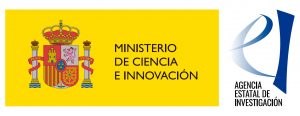
2-Reference: RED2022-134100-T
Title: “UNA APROXIMACION INTEGRATIVA HACIA EL
ENTENDIMIENTO DE LA LOGICA DEL DESARROLLO NEURONAL” ReDevNeural 4.0
PI: Murielle Saade (coordinadora; Paola Bovolenta CBMSO-CSIC)
3- Reference: GRT-2022A-2105
Title: “UNDERSATNDING THE CELLULAR MECHANSIMS OF THE 1q21.1 NEURODEVELOPMENTAL DISORDER”.
PI: Murielle Saade
Proyecto GRT-2022A-2105 financiado por:
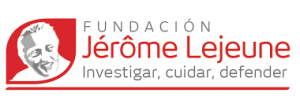
4- Reference: RYC2018-025379-I
Title: “UNDERSTANDING THE MOLECULAR MECHANISMS UNDERLYING ZIKA VIRUS (ZIKV) INFECTION ASSOCIATION TO CONGENITAL MICROCEPHALY”.
PI: Murielle Saade
Ayuda RYC2018-025379-I financiada por:

Concluded Projects
5- Reference: PID2019-110157RA-I00
PROJECT TITLE: UNDERSTAINDING THE MOLECULAR MECHANISMS UNDERLYING ZIKA VIRUS ASSOCIATED NEUROPATHY.
PI: Murielle Saade
Proyecto PID2019-110157RA-I00 financiado por:

Vacancies/Jobs
We are actually welcoming application for a PhD position funded by the FPI scholarship, which offer a 4-year contract supported by the Spanish Ministry of Science and Innovation.
We are also actively seeking postdoctoral candidates with robust background in human stem cell and neurodevelopmental biology to consider applying for upcoming international postdoctoral fellowships (EMBO, and Marie-Curie) as well as opportunities provided by the Spanish Government (Juan de la Cierva).
we are always on the lookout for talented undergraduate and graduate students who are interested in internships, short-term visits, or long-term projects. If you are commitment to scientific exploration, please don’t hesitate to get in touch with us!
Lab corner
- Introductions to the Community: Early-Career Researchers in the Time of COVID-19, Volume 28, Issue 2, 4 February 2021, Pages 184-186. https://www.sciencedirect.com/science/article/pii/S1934590921000126
- First online day for families with children 1q21. 1 deletion organized by the Sant Joan de Déu hospital. https://www.ibmb.csic.es/en/news/outreach/first-online-day-for-families-with-children-with-1q21-1-deletion-organized-by-the-sant-joan-de-deu-hospital/
- We share science, space, events and energy with the team of Dr. Elisa Marti!

